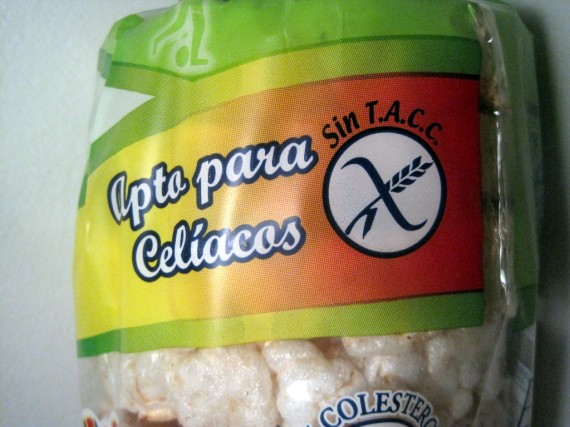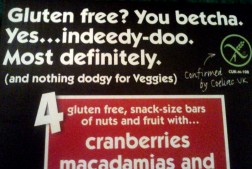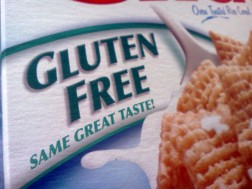Gluten free travelling and wondering what kind of gluten free labelling legislation the country you’re visiting has? You’ve come to the right place. Gluten free labelling differs hugely depending on where you are in the world so it’s important to know what you’re dealing with before you go somewhere. When you’re celiac you can’t simply rely on looking for products labelled as ‘gluten free’. You must first find out what that means where you are. In some countries there is legislation to prevent companies labelling their products as gluten free unless they fulfill high safety standards. Other countries however are free to label products with ‘gluten free’ without fulfilling any standard at all.
Europe
The European Union uses Codex Alimentarius as the standard for gluten free labelling. At the beginning of this year, January 2012, much anticipated new legislation came into effect. This new labelling law was first published in January 2009 but just became mandatory this year.
In supermarkets you will now find two categories of gluten free labelling, ‘gluten free’ and ‘very low gluten’. Only products which contain less than 20ppm can be labelled with ‘gluten free’. Products containing between 21 and 100ppm will be labelled as ‘very low gluten’. The later may be suitable for those people with gluten intolerance or some celiacs.
The United States
UPDATE: As of August, 2014, the FDA have finally issued a regulation of what the term “gluten-free” means. Like Europe, products can no longer be labelled as “gluten-free” unless they contain less than 20ppm.
The USA is extremely behind when it comes to gluten free labelling legislation. The gluten free community are rallying to get the FDA to understand the importance and need for regulated gluten free labelling but for now celiacs in the US are left to guess which products are safe to consume. Whilst there is no country wide regulatory body companies can label products as ‘gluten free’ based on their own ideas of what that means. Some companies take this more seriously than others. There are various gluten free regulators and testers in the US which some companies use to produce products which are genuinely safe for celiacs. Some companies have 100% gluten free factories, some companies get their products tested to ensure they are under 20ppm and others get certified by the GFO. Things are getting better and many companies are doing the right thing and ensuring their products labelled as ‘gluten free’ really are gluten free and safe for celiacs. We are still a law away however from ensuring celiacs are completely safe. For now we still have to call companies and look for gluten testing or certification even if a product is labelled with gluten free.
Canada
In Canada they have recently transitioned to new labelling legislation.  Food allergen labeling laws, which were originally discussed back in 2008 and then announced in 2011, were made compulsory at the start of August 2012. Any products sold in Canada must now adhere to the new legislation meaning that nothing can be labeled gluten free unless “prepared under good manufacturing practices, which contain levels of gluten not exceeding 20 ppm as a result of cross-contamination, meet the health and safety intent of B.24.018 when a gluten-free claim is made.†Simply put, in Canada products cannot be labelled as gluten free unless they contain less than 20ppm of gluten.
Australia and New Zealand
Australia and New Zealand have some of the most strict gluten free labelling legislation in the world. Products here cannot be labelled as gluten free unless there is ‘no detectable gluten’. What may sound a little strange is that a product can be labelled as gluten free even if it contains an ingredient from a gluten containing source such as glucose syrup or carmel colour derived from wheat. This is because when these ingredients are so highly processed there becomes no detectable source of gluten.
So if a product is labelled as ‘gluten free’ this overrides any references to possible gluten on the label such as ‘may contain wheat’.
Argentina
In Argentina a law was passed in 2009 to ensure celiacs can safely shop in Argentina. Products labelled as ‘sin gluten’ or sin TACC’ must contain less than 10ppm of gluten. Not all companies are adhering to this at the moment but more and more companies are. Whilst living in Argentina I found a high number of products labelled as gluten free which made grocery shopping simple.
What’s gluten free labelling like where you are in the world?









Gluten Free Mrs D
Apr 2nd, 2012It’s really interesting how much gluten free labelling differs around the world. Even within Europe with our recently enforced laws on labelling there are big differences between the countries. For example in the UK, Italy, Spain and Sweden the labels are particularly clear even if you don’t speak those languages. Whereas in France, the gluten free labelling is less consistent and often difficult to read as the font can be small. I was very pleasantly surprised by the amount of products labelled ‘sin TACC’ in Argentina.
In the UK we are seeing the “gluten free” label on products but I’ve not seen a “very low gluten” label yet. We are, however, seeing a lot of products labelled as “no gluten containing ingredients” label – particularly on crisps – which is outside of the EU gluten free labelling regulations.
Alex G
Apr 3rd, 2012Just to add: that glucose syrup from wheat can be used in glutenfree foods is not unique to Aus/NZ – applies to UK and EU too.
Paula @CeliacCorner
Aug 21st, 2012Informative post! Excellent research!
Melinda
Apr 17th, 2013Ayy its so confusing here in the US. so even gluten free is not technically safe?? that’s crazy. ive been wondering why some things that clearly don’t list gluten or wheat products are not labeled gluten free? maybe its cross contamination or something? it would make it easier if there was a set standard.
Nellie
Feb 16th, 2016In Australia, “gluten” also includes oats. I have had reactions to oats before and have been told this is linked to my Coeliac Disease by my doctor.
Now I am about to travel to London, Edinburgh and Paris with a friend and was just wondering what the labeling laws, regarding oats, are in the UK and France? If “gluten” does not cover oats should I just add that on to the end of what I am saying (ie. “I cannot eat gluten or oats”)?
Also can you give me any advice on how I will cope in Europe? For example do hotels in London and Paris provide for people with dietary requirements if they charge for breakfast as a part of their fees? Or am I better off just finding a local cafe/store and buying gluten free food there?
By the way which supermarkets/bakeries are most likely to have GF (and oat free) produce?
Nellie
Feb 16th, 2016Melinda,
Did you know that some Coeliacs react to oats?
Perhaps this is your problem.